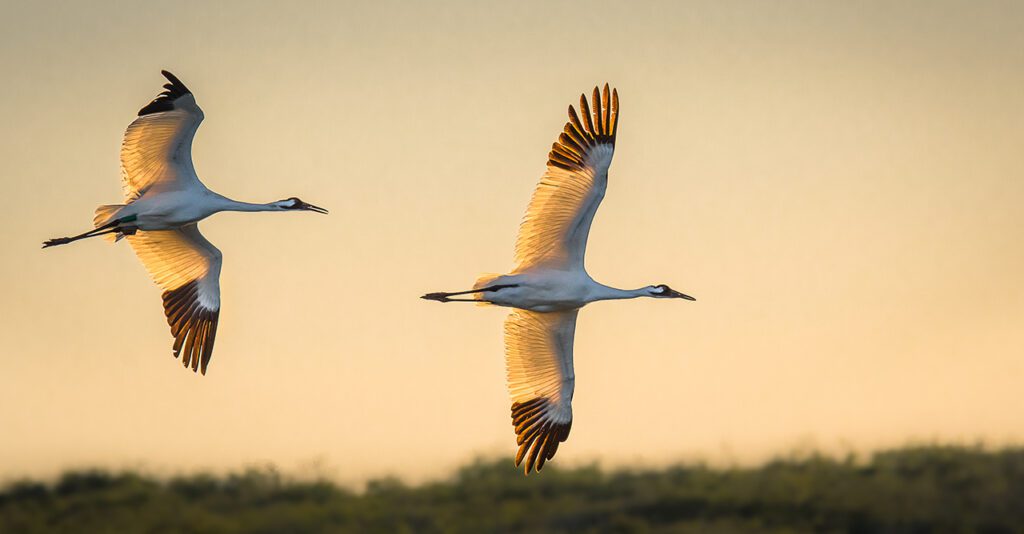Stand Up for the Endangered Species Act
Submit Public Comments Opposing Rule by May 19.

Dear Supporters:
Last month, the Trump Administration proposed a rule change that would profoundly weaken the Endangered Species Act (ESA), the most important law for protecting and conserving threatened plants and animals in our country. We believe this change would be catastrophic for Endangered Whooping Cranes, as well as countless other species, and their habitats.
Signed into law in 1973—the same year as the International Crane Foundation was established—the ESA is a keystone of conservation success. It is credited with saving 99 percent of the species it protects, like the Endangered Whooping Crane, which was part of the first cohort of species protected by the law.
Despite its overwhelming success and public support, the ESA has been sharply criticized by those who want to increase mining, drilling, and other land and water resources development that could negatively impact the habitat requirements for endangered species.
In the proposed rule change by the U.S. Departments of the Interior and Commerce, the administration seeks to redefine a single word in the ESA—“harm”—to mean direct mortality only and not include loss of habitat. This would rescind the regulatory definition of harm and completely alter what it means to harm imperiled plants and animals.
The proposed new definition of “harm” states that species are protected only from intentional killing or injury, such as through hunting or trapping, and not from the degradation or loss of habitat that plants and animals need to survive. By emphasizing that harm must be intentional, the change also allows for killing or injury to endangered plants and animals by those who did not directly seek to harm them. Further, this change could result in the loss of our ability to effectively site energy resources, such as large transmission lines, to accommodate endangered species’ migratory pathways.
In the 1940s, only 21 Whooping Cranes remained in the wild due to unregulated hunting and massive habitat loss. Today, there are more than 690 wild Whooping Cranes, largely due to these vital legal protections and reintroduction efforts, such as those we lead. However, the species remains endangered and still needs our help and legal protections.
With this proposed order, freshwater diversions, wetland drainage, land development, powerline collisions, and other disturbances at key nesting, feeding, and roosting sites are expected to increase. Additionally, we are concerned about proposals that may create infinite loopholes and legal escapes for anyone who shoots a crane, by allowing them to claim they didn’t mean to do it and requiring proof beyond a reasonable doubt that the shooting was was intentional, which can be challenging to establish.
The International Crane Foundation is dedicated to protecting Whooping Cranes and the wetlands they depend on. Now, we need your help to secure their future and the future of many other species.
Here’s How You Can Help
- View the recording of our From the Field Webinar to learn more about the Endangered Species Act and how you can help save it.
- Submit a public comment opposing this proposed rule on the Federal Register. Comments must be received by May 19 and may be submitted digitally here.
- Find and contact your elected officials. Your voice matters!
- Use the United States House of Representatives search tool or Facebook’s Town Hall feature to find and contact your elected officials. Tell them you oppose this executive order and any legislation that threatens the survival of Whooping Cranes and the coastal and inland wetlands they depend on.
- Let your members of Congress know that you support the ESA and urge them to defend this bedrock environmental law.
- Share our post on Facebook or Instagram to help spread the word about this issue!
- Join today by donating to support our ongoing work to save the Whooping Crane and the habitats they, and so many more, rely upon.

Dr. Rich Beilfuss
President and CEO
International Crane Foundation


